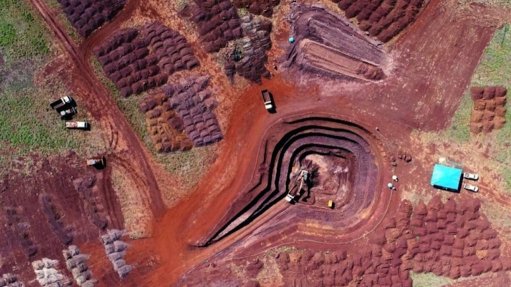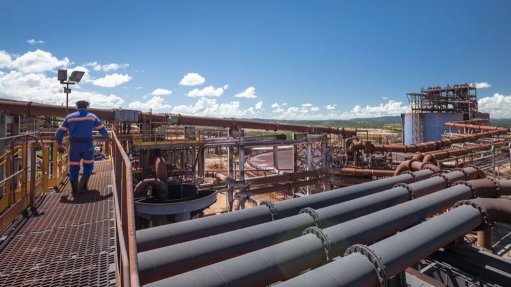The Magnificent Seven of industrial software development
This article has been supplied by the author and has not been written or solicited by Creamer Media. It may be available only for a limited time on this website.
By Johan Potgieter, Cluster Industrial Software Lead at Schneider Electric
There’s fast paced and there’s supersonic, and the latter certainly applies to the evolution of software or more specifically industrial software. The last year has seen the industrial software step to the fore to take over the mundane, repetitive and sometime dangerous allowing us to focus (once again) on what make us uniquely human.
And there’s a cheat sheet if you will, seven developments that are in some instances complimentary, but all have one thing in common: improving the human experience.
1. Generative AI and Intelligent Automation
Generative AI needs no introduction, however, combined with intelligent automation it packs quite the bunch. A prime example is Robotic Process Automation (RPA) which today automates rule-based tasks.
According to Gartner, 90% of robotic process automation (RPA) vendors will offer generative-AI-assisted automation by 2025. RPA continues to grow its footprint and remains a popular software market as organisations look for improving operational efficiency with tactical automation.
Other important benefits of Generative AI (in industrial settings) include chatbots which enhance customer service and support, and predictive maintenance.
2. Digital Worker-First Processes
Driven primarily by under-centric design and collaboration tools, it undoubtedly prioritises and enhances the user experience (UX).
In the case of the user-centric design, it adapts interfaces to users’ specific behavioural preferences and work output.
3. Pure Play to Platform Play
Platform play essentially sees industrial software moving from standalone, also known as pure play, applications to interconnected platforms that include APIs, microservices, and cloud-based platforms. These platform ecosystems, if you will, offers benefits such as scalability, innovation, and data sharing.
4. Strategic Applications
It is within industrial setting that strategic applications really shine, allowing organisation to align technology with business-orientated goals. A primary example is supply chain optimisation (SCO) that include warehousing, logistics, and delivery, managing costly infrastructure expenditure.
5. Low-Code and No-Code Development
This development sees citizen developers, who are non-technical users, create applications using visual interfaces. For example, they can leverage drag-and-drop components and pre-built templates, simplifying the development process.
This empowers business users to address their own challenges without extensive coding knowledge.
6. Ethical Automation and ESG Compliance
Technically not a software-driven development per se, both ethical automation and ESG (Environmental, Social, and Governance) compliance play important roles in the of proliferation of evolved industrial software.
Ethical AI aligns with established ethical guidelines, ensuring that AI systems make fair and unbiased decisions whilst also addressing concerns such as privacy.
ESG form an important part of software practices, taking in to account the rollout of sustainable solution to reduce environmental impact as well as associated social responsibility and governance.
7. Governance and Security
The above undoubtedly reconfirms the importance of governance and security. Here, organisations should prioritise governance and security measures, safeguarding both their organisations and workers whilst complying with regulatory standards.
Comments
Press Office
Announcements
What's On
Subscribe to improve your user experience...
Option 1 (equivalent of R125 a month):
Receive a weekly copy of Creamer Media's Engineering News & Mining Weekly magazine
(print copy for those in South Africa and e-magazine for those outside of South Africa)
Receive daily email newsletters
Access to full search results
Access archive of magazine back copies
Access to Projects in Progress
Access to ONE Research Report of your choice in PDF format
Option 2 (equivalent of R375 a month):
All benefits from Option 1
PLUS
Access to Creamer Media's Research Channel Africa for ALL Research Reports, in PDF format, on various industrial and mining sectors
including Electricity; Water; Energy Transition; Hydrogen; Roads, Rail and Ports; Coal; Gold; Platinum; Battery Metals; etc.
Already a subscriber?
Forgotten your password?
Receive weekly copy of Creamer Media's Engineering News & Mining Weekly magazine (print copy for those in South Africa and e-magazine for those outside of South Africa)
➕
Recieve daily email newsletters
➕
Access to full search results
➕
Access archive of magazine back copies
➕
Access to Projects in Progress
➕
Access to ONE Research Report of your choice in PDF format
RESEARCH CHANNEL AFRICA
R4500 (equivalent of R375 a month)
SUBSCRIBEAll benefits from Option 1
➕
Access to Creamer Media's Research Channel Africa for ALL Research Reports on various industrial and mining sectors, in PDF format, including on:
Electricity
➕
Water
➕
Energy Transition
➕
Hydrogen
➕
Roads, Rail and Ports
➕
Coal
➕
Gold
➕
Platinum
➕
Battery Metals
➕
etc.
Receive all benefits from Option 1 or Option 2 delivered to numerous people at your company
➕
Multiple User names and Passwords for simultaneous log-ins
➕
Intranet integration access to all in your organisation




















